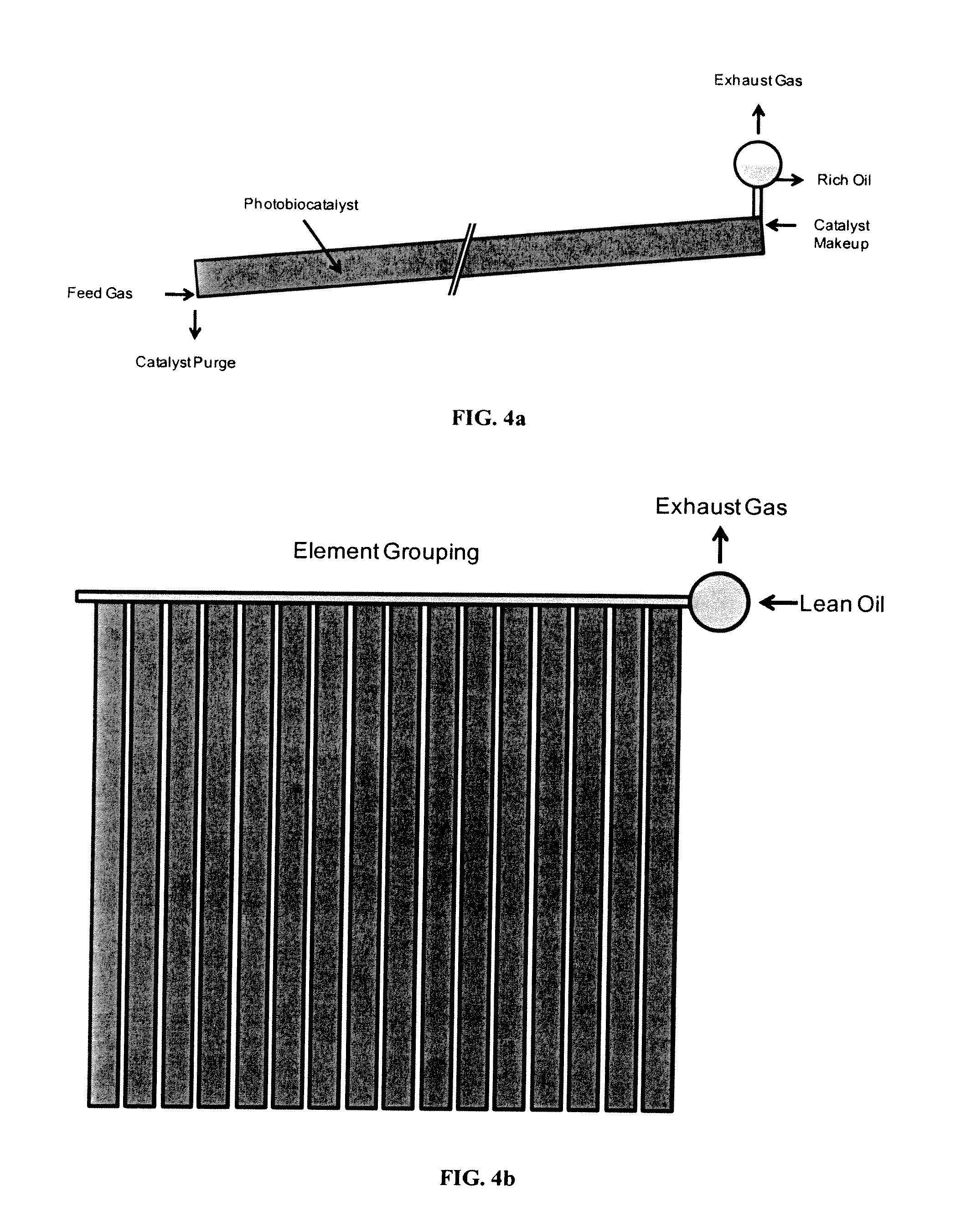System for photobiosynthetic production, separation and saturation of carbonaceous chemicals and fuels
a photobiosynthetic and carbonaceous technology, applied in biomass after-treatment, organic chemistry, specific use bioreactors/fermenters, etc., can solve the problems of high cost of these commodities, high cost of isoprene production, and requiring further refinement or limited use, so as to prevent the formation of explosive mixtures, reduce the degree of unsaturation, and maximize the carbon flux
- Summary
- Abstract
- Description
- Claims
- Application Information
AI Technical Summary
Benefits of technology
Problems solved by technology
Method used
Image
Examples
example 1
Synthesizing a Gene for Isoprene Synthase (v2.2)
[0138]A cDNA clone for isoprene synthase was cloned from the poplar (Miller, et al. (2001). Planta 213, 483-487). Expression of this foreign gene in E. coli, and production of isoprene from the recombinant organism, has also been demonstrated (Miller, et al. (2001). Planta 213, 483-487). The class of enzymes to which isoprene synthase belongs, terpene cyclases, has been relatively well-studied, e.g. the determinations of the 3D structures of the homologs 5-epi-aristolochene synthase (Starks, et al. (1997) Science 277, 1815-1820) and bornyl diphosphate synthase (Whittington, et al. (2002) Proc. Natl. Acad. Sci. U.S.A. 99, 15375-14380). The structures are used to aid protein engineering experiments for optimizing the enzyme.
[0139]A gene encoding isoprene synthase is synthesized using the technology known in the art and modified to: (a) provide optimized codons for expression in T. elongatus, and (b) remove or insert certain restriction s...
example 2
Engineering Thermosynechococcus elongatus BP-1 to Express Isoprene Synthase
[0140]Thermosynechococcus elongatus BP-1 is a particularly favorable cyanobacteria strain with which to assess expression of isoprene synthase. There has been extensive characterization of the photosynthetic machinery of this microorganism (Rutherford, and Boussac, (2004) Clefs CEA 49, 86-92) and the complete DNA sequence of its genome has been determined and annotated (Nakamura, et al. (2002). DNA Res. 9, 123-130). Moreover, transformation with plasmids via electroporation and expression of foreign genes has been demonstrated (Iwai, et al. (2004) Plant Cell Physiol. 45, 171-175). Thus, all the basic tools exist for metabolic engineering with T. elongatus. T. elongatus also has an optimal growth temperature of 55° C., more than 20° above the boiling point for isoprene, meaning that the kinetics of isoprene volatilization from the living cells should be extremely favorable, “pulling” the reaction forward.
[0141...
example 3
Test Cultures
[0142]Test cultures of the recombinant strain on minimal medium containing trace elements but no carbon source (apart from CO2) are conducted to establish photosynthetic production of isoprene from carbon dioxide, according to three criteria: (i) detection of levels of off-gassed isoprene significantly higher than those found in the off-gas from non-recombinant control cells; (ii) demonstration of the light-inducibility and light-dependence of isoprene synthesis; and (iii) demonstration that the isoprene can be isotopically labeled by culturing the recombinant organism in the presence of 13CO2.
PUM
| Property | Measurement | Unit |
|---|---|---|
| temperature | aaaaa | aaaaa |
| wavelengths | aaaaa | aaaaa |
| boiling point | aaaaa | aaaaa |
Abstract
Description
Claims
Application Information
 Login to View More
Login to View More - R&D
- Intellectual Property
- Life Sciences
- Materials
- Tech Scout
- Unparalleled Data Quality
- Higher Quality Content
- 60% Fewer Hallucinations
Browse by: Latest US Patents, China's latest patents, Technical Efficacy Thesaurus, Application Domain, Technology Topic, Popular Technical Reports.
© 2025 PatSnap. All rights reserved.Legal|Privacy policy|Modern Slavery Act Transparency Statement|Sitemap|About US| Contact US: help@patsnap.com



